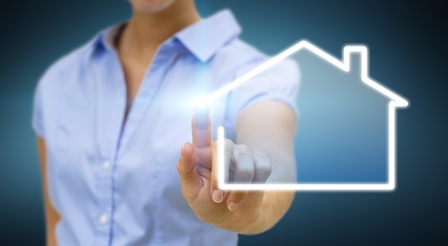
While mortgage buy-downs are rare these days with interest rates at historic lows, they are still available to buyers. What are they? They are a way of subsidizing your own mortgage by paying an upfront fee to reduce the interest rate on your home loan either temporarily or permanently.
For these and other lending questions, speak with a loanDepot licensed loan officer at (888) 983-3240.
There are two main buy-down options:
The 3-2-1 Mortgage Buy Down
A 3-2-1 mortgage buy down allows the purchaser to pay a fee to lower the interest rate on their mortgage for three years. This type of buy down increases a buyer’s purchasing power because the borrower’s approval is based on a lower monthly payment resulting from the reduced interest rate.
Here’s an example:
If you qualify for a $400,000 home loan at 5.75 percent interest, your payment of principal and interest would be $2,334 each month. If you were to opt for a 3-2-1 mortgage buy down at a cost of $17,170, your mortgage rate for the first year would be reduced to 2.75 percent, which would lower your monthly payment to $1,633. That’s a reduction of $701 per month, or $8,416 for the year.
In the second year of your loan, the interest rate would raise to 3.75 percent, increasing your monthly payment to $1,852, still a savings of $482 from the payment without a mortgage buy-down. In year three, with a 4.75 percent interest rate, your payment would be $2,087. By year four, you’re back at your original interest rate of 5.75 percent and payment of $2,334, which is fixed for the remainder of the term.
This method keeps the monthly payment lower for three years and is useful in cases in which a borrower expects their income to increase, whether it is a promotion at work or a spouse returning to the workforce. It also helps because the borrower qualifies for the loan at the reduced interest rate and payment, which allows for more buying power.
A 2-1 mortgage buy-down works the same as a 3-2-1, except that the interest rate and payment are reduced for two years instead of three and it is less expensive.
One of the best benefits of a mortgage buy down is that the buyer can negotiate for the seller to pay the upfront cost as a contingency of the sale. Instead of haggling on the price of the property, asking the seller to fund a mortgage buy down can be win-win for both parties.
Permanent mortgage buy downs
It is possible to buy down your mortgage interest rate permanently, but the costs are higher. Permanent buy downs should only be used if you know you will live in your home long term.
For example, if you want to borrow $300,000 at 4.125 percent, your payment without taxes and insurance would be $1,454 a month. Buying down one point would cost you $3,000 and reduce your monthly payment by $43.41 per month. You would have to own your home, without refinancing, for nearly six years before you make your money back.
A buy down can be particularly helpful to a borrower with bad credit who happens to have extra cash. Perhaps a bankruptcy or foreclosure has wrecked your credit report but you have cash in the bank. A buy down may be the only way to obtain a reasonable interest rate.
Cons of a mortgage buy down
A mortgage buy down is a powerful tool for someone who expects his or her income to increase in the coming years, but upfront costs can be prohibitive. Instead of having to wait for that raise or promotion, with a buy down you can jump into the housing market and take advantage of today’s low interest rates. But not all first time homebuyers are in a financial position to afford it.
In essence, you are pulling cash out of savings to pre-pay the interest on your home loan. Because of the high cost of a buy down, lower income applicants may be priced out of the process.
It can also be difficult to manage your budget when your mortgage payments are increasing every year. You may think now that you will be able to afford the higher payments, but three years is a long time and a lot can happen. A new car or a medical emergency can easily eat up that extra income. And if your other expenses have increased over the three-year period, it could make it harder to afford that increased payment.
As an alternative to a mortgage buy-down, you might consider using the same amount of cash to increase your down payment at the time you are buying or refinancing. A bigger down payment lowers your loan-to-value ratio, which lets you buy more house and makes approval of your mortgage application more likely. It also reduces the principal you will owe, which will reduce all future mortgage payments regardless of the interest rate.
If your goal is to lower your interest rate, refinancing when rates are favorable might be a much less expensive and more permanent solution.
Buy downs may also include large fees for closing costs and limit certain home equity lines of credit available to the homeowner.
For more information, speak with a loanDepot licensed loan officer at (888) 983-3240.
RELATED TOPICS
Here's what not to do when applying for a home loan
First-time homebuyer? Get your credit in order
Fixed-rate vs. adjustable mortgages: which is better?
5 ways to benefit from refinancing your mortgage

